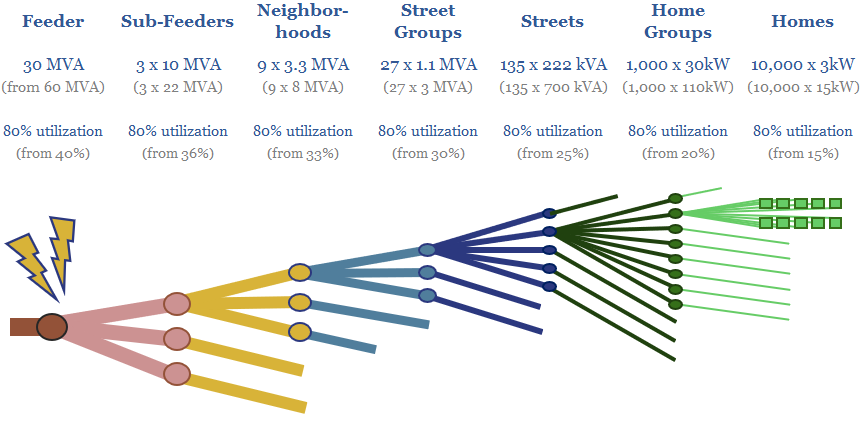What if AI re-shaped the power grid? This 16-page report sees potential to halve levelized T&D costs; de-bottleneck 4.5% pa of global electricity demand growth; and shift over $100bn pa of spending away from high-voltage capital goods to low-voltage smart devices and networking equipment.
Two-thirds of the price paid for electricity by retail consumers covers the cost of the transmission and distribution network, across 140M global circuit kilometers, which only typically get c15-40% utilized, as described on pages 2-3.
But what if AI and super smart grids could optimize and re-schedule loads in real time, driving utilization up to 80% across the board, and unlocking improved possibilities for consumers in the process?
We have spent the first half of 2025, doing background work, to understand whether this is feasible: including by plotting load profiles, disaggregating them by device at real properties, and studying the roll-out of smart meters, and what leading companies can do with these ever-smarter networks.
How could AI re-shape the power grid? Einstein famously said that “imagination is more important than experience”. So our imagined answer for how this system might work is described on pages 4-8.
Absorbing excess electricity would likely follow a merit order – e.g., home batteries, thermal storage, phase change materials – as discussed on page 9.
Trimming peak power demand is the most important challenge, based on our prior work into peak power demand. But we are already seeing some amazing AI-enabled systems scaling up here, as profiled on pages 10-13.
What if AI re-shaped the power grid? AI is progressing to the point where it could quite plausibly schedule the loads across individual homes, and wider networks. We outline the benefits for this system on page 14.
This would transform the feasibility of global electricity demand growth, and shift $100bn pa of spending away from high-voltage capital goods towards low-voltage smart devices and network equipment, as discussed on pages 15-16.
